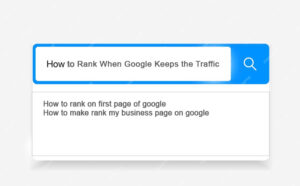Introduction
In today’s digital age, having a website is just the first step. To truly capitalize on your online presence, you need to optimize your site for better conversions. This involves creating a seamless experience for your visitors that guides them toward taking the desired action, whether it’s making a purchase, signing up for a newsletter, or filling out a contact form. Conversion optimization is the bridge between attracting traffic to your site and turning that traffic into tangible results.
Understanding Conversion Optimization
Conversion optimization is the process of enhancing your website to increase the percentage of visitors who complete a desired action. It’s about understanding what drives, stops, and persuades your users, and then refining your site to align with their needs and expectations. Effective conversion optimization requires a blend of creativity, analysis, and technical know-how to make data-driven decisions that improve performance.
The Importance of User Experience (UX)
User experience is a critical component of conversion optimization. A website that is difficult to navigate or visually unappealing will quickly lose potential customers. Ensuring that your site is user-friendly and intuitive can significantly increase your conversion rates.
Enhancing Navigation
Clear and concise navigation is crucial for a positive user experience. Visitors should be able to find what they’re looking for quickly and easily. This means having a well-organized menu, logical categorization of content, and an efficient search function. The goal is to reduce friction and guide users effortlessly toward conversion points.
Crafting Compelling Calls to Action (CTAs)
Your website’s calls to action (CTAs) are the driving force behind conversions. A well-crafted CTA can be the difference between a user taking action or leaving your site without engaging.
Strategic Placement of CTAs
Placement is just as important as the wording of your CTAs. CTAs should be prominently placed where they naturally attract attention, such as above the fold, at the end of content sections, or as pop-ups. They should also be clear and action-oriented, using strong verbs that encourage immediate action.
You would like to read: Mastering the Art of Content Planning
Utilizing A/B Testing
A/B testing is a powerful tool in the conversion optimization arsenal. By testing different versions of a webpage, you can determine which elements perform better in driving conversions.
Measuring the Impact of Changes
Whether it’s a change in headline, CTA, or page layout, A/B testing allows you to measure the impact of these changes on user behavior. By continuously testing and refining your website, you can incrementally improve conversion rates over time.
Improving Website Load Speed
Load speed is a critical factor in conversion optimization. A slow website can frustrate users and lead to high bounce rates, which directly impacts your conversion rates.
The Connection Between Speed and Conversions
Studies have shown that even a one-second delay in page load time can result in a 7% reduction in conversions. Ensuring that your website loads quickly by optimizing images, reducing server response time, and leveraging browser caching is essential for keeping users engaged and driving conversions.
Leveraging Social Proof
Social proof is a psychological phenomenon where people conform to the actions of others under the assumption that those actions reflect the correct behavior. In the context of a website, social proof can be a powerful motivator for conversions.
The Power of Testimonials and Reviews
Displaying customer testimonials, reviews, and case studies on your website can help build trust and credibility. Users are more likely to convert if they see that others have had positive experiences with your product or service.
You would like to read: Unlocking Success: The Power of Backlinks in Digital Marketing
Optimizing for Mobile Users
With the increasing use of mobile devices, optimizing your website for mobile users is no longer optional—it’s essential. A site that isn’t mobile-friendly will not only frustrate users but also lose out on potential conversions.
Mobile-First Design Principles
Mobile-first design principles involve designing your website with mobile users in mind from the outset. This includes responsive design, touch-friendly navigation, and fast load times on mobile networks. By prioritizing the mobile experience, you can capture a significant portion of the market and boost your conversions.
Streamlining the Checkout Process
For e-commerce sites, the checkout process is the final hurdle before conversion. A complicated or lengthy checkout process can lead to cart abandonment, costing you valuable sales.
Reducing Cart Abandonment Rates
To reduce cart abandonment, ensure that your checkout process is as simple and streamlined as possible. This includes offering guest checkout options, minimizing the number of steps required to complete a purchase, and providing clear, upfront information about shipping costs and delivery times.
Analyzing and Acting on User Data
Data is at the heart of effective conversion optimization. By analyzing user behavior on your website, you can gain valuable insights into what is working and what isn’t.
Tools for Gathering and Interpreting Data
Tools like Google Analytics, heatmaps, and user feedback surveys can provide you with detailed data on how users interact with your site. Use this data to identify areas for improvement and to make informed decisions about where to focus your optimization efforts.
Continuous Improvement and Adaptation
Conversion optimization is not a one-time task; it requires ongoing effort and adaptation. As user behavior and technology evolve, so too must your website.
Staying Ahead with Regular Updates
Regularly updating your website to reflect changes in user preferences, market trends, and Google’s algorithm updates is essential for maintaining high conversion rates. By committing to continuous improvement, you can stay ahead of the competition and ensure long-term success.
Conclusion
Optimizing your website for better conversions is a multifaceted process that requires attention to detail and a commitment to understanding your users. By focusing on user experience, crafting compelling CTAs, leveraging social proof, and continuously analyzing and improving your site, you can significantly enhance your conversion rates and achieve your business goals. Remember, the key to successful conversion optimization lies in making incremental changes that, over time, lead to substantial improvements in performance.










